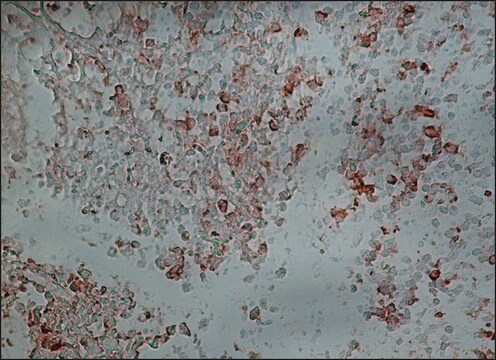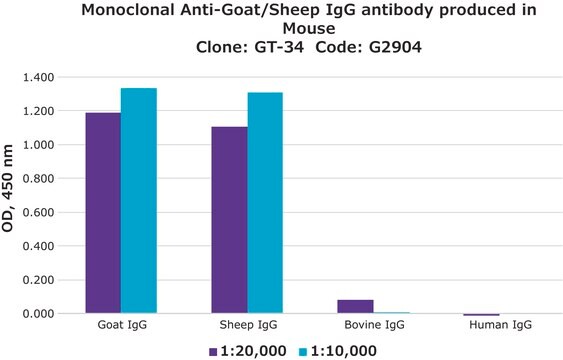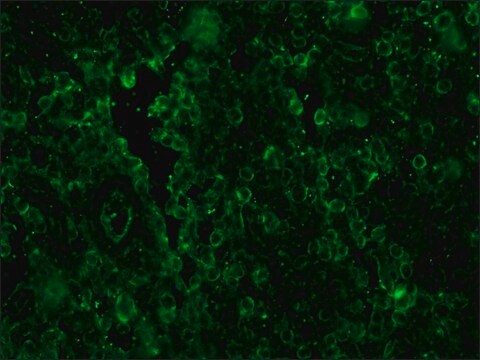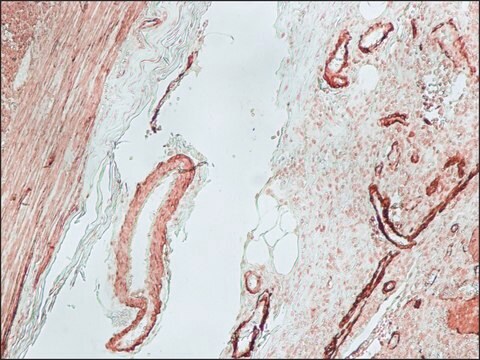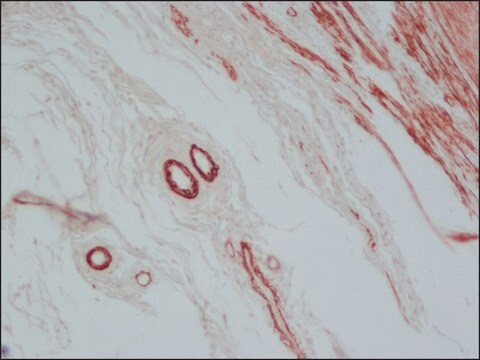F7634
Anti-Sheep IgG (whole molecule)–FITC antibody produced in donkey
affinity isolated antibody, buffered aqueous solution
Synonym(s):
Donkey Anti-Sheep IgG (whole molecule)–Fluorescein isothiocyanate
Sign Into View Organizational & Contract Pricing
All Photos(1)
About This Item
Recommended Products
biological source
donkey
Quality Level
conjugate
FITC conjugate
antibody form
affinity isolated antibody
antibody product type
secondary antibodies
clone
polyclonal
form
buffered aqueous solution
technique(s)
indirect immunofluorescence: 1:40
storage temp.
2-8°C
target post-translational modification
unmodified
General description
IgG antibody subtype is the most abundant serum immunoglobulins of the immune system. It is secreted by B cells and is found in blood and extracellular fluids and provides protection from infections caused by bacteria, fungi and viruses. Maternal IgG is transferred to fetus through the placenta that is vital for immune defence of the neonate against infections. Anti-Sheep IgG (whole molecule)-FITC antibody is specific for sheep IgG subclasses. Donkey anti-sheep IgG is isolated by affinity isolation and conjugated to Fluorescein Isothiocyanate (FITC).
Specificity
Binds all sheep Igs
Immunogen
Purified sheep IgG
Application
Anti-Sheep IgG (whole molecule)-FITC antibody may be used for immunofluorescence of mouse spleen cells at a working antibody dilution of 1:40. The antibody was used for direct immunofluorescence of rat and human spermatozoa and in FISH analysis.
Physical form
Solution in 0.01 M phosphate buffered saline, pH 7.4, containing 1% bovine serum albumin and 15 mM sodium azide
Disclaimer
Unless otherwise stated in our catalog or other company documentation accompanying the product(s), our products are intended for research use only and are not to be used for any other purpose, which includes but is not limited to, unauthorized commercial uses, in vitro diagnostic uses, ex vivo or in vivo therapeutic uses or any type of consumption or application to humans or animals.
Not finding the right product?
Try our Product Selector Tool.
Storage Class Code
10 - Combustible liquids
WGK
WGK 2
Flash Point(F)
Not applicable
Flash Point(C)
Not applicable
Choose from one of the most recent versions:
Already Own This Product?
Find documentation for the products that you have recently purchased in the Document Library.
Yvette J Williams et al.
The British journal of nutrition, 99(1), 100-109 (2007-08-19)
Two rumen protozoa vaccine formulations containing either whole fixed Entodinium or mixed rumen protozoa cells were tested on Merino sheep with the aim of decreasing the number and/or activity of protozoa in the rumen. Negative control (no antigen) and positive
L O Goodwin et al.
Molecular human reproduction, 3(3), 255-268 (1997-03-01)
Therapeutic administration of calcium channel-blocking medications has been correlated with reduced mannose receptor expression and iatrogenic human male infertility. In this report, we investigate whether the pharmacological activity of dihydropyridines, which block calcium influx through voltage-dependent calcium channels, contributes to
Galina V Mukamolova et al.
Molecular microbiology, 46(3), 623-635 (2002-11-02)
Mycobacterium tuberculosis and its close relative, Mycobacterium bovis (BCG) contain five genes whose predicted products resemble Rpf from Micrococcus luteus. Rpf is a secreted growth factor, active at picomolar concentrations, which is required for the growth of vegetative cells in
Ole Morten Seternes et al.
Molecular and cellular biology, 22(20), 6931-6945 (2002-09-21)
The p38 mitogen-activated protein kinase (MAPK) pathway is an important mediator of cellular responses to environmental stress. Targets of p38 include transcription factors, components of the translational machinery, and downstream serine/threonine kinases, including MAPK-activated protein kinase 5 (MK5). Here we
K Bakou et al.
Mutagenesis, 17(3), 233-239 (2002-04-25)
Fluorescence in situ hybridization (FISH) was used to evaluate spontaneous and aneuploidogen-induced micronucleus frequencies and non-disjunction of chromosomes X and 8 in cultured binucleated lymphocytes of women of two age groups. Demecolcine and vincristine were used as model aneuploidogens to
Our team of scientists has experience in all areas of research including Life Science, Material Science, Chemical Synthesis, Chromatography, Analytical and many others.
Contact Technical Service
